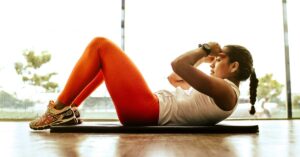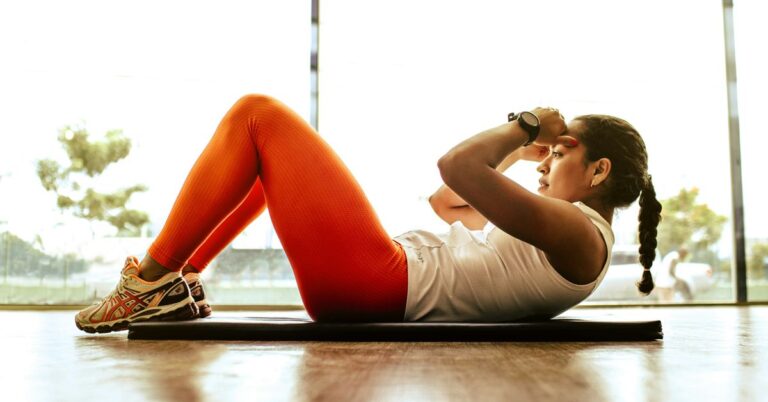Welcome to the World of Body Weight Fitness
Have you ever scrolled through social media and seen those impossibly fit individuals performing gravity-defying stunts? It can be both inspiring and a tad disheartening. However, there’s a silver lining: you don’t need a gym membership or fancy equipment to get fit. All you need is your own body weight. Seriously! It’s like having your very own gym on standby, ready to go at any moment.
With the rise of home workouts, especially in recent years, many have turned to bodyweight exercises as a viable option to stay fit. In this article, we’ll dive deep into the world of bodyweight fitness, exploring effective exercises, the science behind them, and how to create a workout routine that fits seamlessly into your life—no gym required.
The Science Behind Bodyweight Training
Now, let’s get a bit nerdy for a moment. Bodyweight training, or calisthenics, is a form of strength training that uses your own weight as resistance. This kind of training engages multiple muscle groups simultaneously, which means you can achieve a full-body workout without lifting a single weight. (Trust me, your muscles will thank you.)
Research suggests that bodyweight exercises can improve strength, flexibility, and endurance. Some studies have indicated that training with your own body weight can lead to significant gains in muscle mass and strength, comparable to traditional weightlifting. Plus, the functional movements learned through bodyweight training can enhance your overall athletic performance. It’s a win-win!
Getting Started: The Essentials
Before you dive headfirst into a series of push-ups and squats, there are a few things to consider. First off, how much space do you have? You don’t need a sprawling mansion to get fit at home—just a bit of room to move around. And don’t worry if you live in a cozy apartment; you can still get a great workout without disturbing the neighbors too much.
Next, think about your current fitness level. If you haven’t exercised in a while, it might be wise to ease into things. (I remember when I tried to jump back into fitness with all-out burpees—let’s just say my body had a different idea.) Start with easier variations of exercises and gradually work your way up as your strength improves.
Essential Bodyweight Exercises
Alright, let’s get to the good stuff. Here are some fundamental bodyweight exercises that will get your heart pumping, muscles burning, and sweat dripping. You don’t need any special equipment—just your body and some enthusiasm!
1. Push-Ups
Ah, the classic push-up. This exercise targets your chest, shoulders, and triceps, and it’s a great way to build upper body strength. Start in a plank position, with your hands slightly wider than shoulder-width apart. Lower your body until your chest nearly touches the floor, then push back up. If you find traditional push-ups too challenging, try knee push-ups or incline push-ups using a sturdy surface.
2. Squats
Squats are excellent for building strength in your legs and glutes. Stand with your feet shoulder-width apart and lower your hips as if you’re sitting back into a chair. Keep your chest up and your knees behind your toes. Aim for three sets of 10-15 repetitions. If you want to spice things up, try jump squats or single-leg squats as you progress.
3. Planks
The plank is a fantastic way to engage your core, which is essential for overall stability and strength. Start in a push-up position but rest on your forearms instead of your hands. Hold this position for as long as you can, aiming for 30 seconds to a minute. As you get stronger, try side planks or plank variations like plank jacks for an extra challenge.
4. Lunges
Lunges are another great lower-body exercise that also engages your core. Step forward with one leg, lowering your hips until both knees are bent at a 90-degree angle. Make sure your front knee doesn’t go past your toes. Alternate legs and aim for three sets of 10-12 repetitions on each side. Feeling adventurous? Try reverse lunges or walking lunges for variety.
5. Burpees
If you’re looking for a full-body workout that will get your heart racing, look no further than the burpee. Start in a standing position, drop into a squat, kick your feet back into a plank, do a push-up (if you’re up for it), jump your feet back to your hands, and leap straight up. Sure, they’re tough, but they’re also incredibly effective. If you’re not quite ready for the full burpee, you can skip the push-up and focus on the squat and jump.
Creating Your Home Workout Routine
Now that you know some solid exercises, let’s talk about how to structure your workout routine. It’s essential to keep things balanced, so you’re not overworking one muscle group while neglecting others. Here’s a simple approach to get you started:
1. Warm-Up
Before you jump into the heavy lifting (or, you know, bodyweight exercises), it’s crucial to warm up. A good warm-up increases your heart rate, loosens your muscles, and decreases the risk of injury. Spend about 5-10 minutes doing some dynamic stretches, high knees, or light jogging on the spot.
2. The Workout
For a well-rounded routine, aim to include a mix of strength, cardio, and flexibility exercises. Here’s a sample workout you might consider:
- Push-Ups: 3 sets of 10-15 reps
- Squats: 3 sets of 10-15 reps
- Planks: 3 sets, 30-60 seconds each
- Lunges: 3 sets of 10-12 reps per leg
- Burpees: 3 sets of 5-10 reps
Feel free to adjust the reps and sets based on your fitness level. And remember, it’s not a race! Focus on form over quantity.
3. Cool Down
After you’ve conquered your workout, don’t skip the cool-down. Stretching is vital for recovery and flexibility. Spend about 5-10 minutes cooling down with static stretches, focusing on all the major muscle groups you’ve worked. (Trust me, your body will thank you the next day!)
Staying Motivated
Let’s be honest: staying motivated can be a challenge, especially when your couch is calling your name. Here are a few tips that might help keep that fire burning:
- Set Goals: Whether it’s doing 10 push-ups in a row or being able to hold a plank for a minute, having specific goals can help keep you focused.
- Track Your Progress: Keep a workout journal or use a fitness app to log your workouts. Seeing your improvements over time can be incredibly motivating.
- Mix It Up: Don’t be afraid to change your routine. Incorporate new exercises or try different workouts to keep things fresh.
- Find a Workout Buddy: If possible, recruit a friend or family member to join you. There’s nothing like a little friendly competition to keep you on your toes.
And hey, if you miss a workout or two, don’t beat yourself up about it. Life happens! Just jump back in when you can.
Advanced Bodyweight Techniques
Once you’ve mastered the basics, you might be itching for more advanced bodyweight techniques. These exercises can take your training to the next level and challenge your body in new ways.
1. Handstand Push-Ups
Feeling adventurous? Handstand push-ups are a killer move that combines balance and strength. They primarily work your shoulders and triceps. Start by practicing against a wall for support, and when you feel comfortable, work your way to freestanding handstands.
2. Pistol Squats
Pistol squats are a single-leg squat that requires balance, strength, and flexibility. They can be quite challenging, so you might want to start with assisted variations before attempting the full movement. (Trust me; they’re not as easy as they look!)
3. Muscle-Ups
The muscle-up is a combination of a pull-up and a dip, and it’s a fantastic test of upper body strength. If you’re up for the challenge, start with strict pull-ups and dips separately before attempting the muscle-up.
Common Mistakes to Avoid
As with any workout regimen, it’s essential to avoid common pitfalls that can derail your progress. Here are a few mistakes I’ve seen (and made) over the years:
- Poor Form: Always prioritize form over quantity. Performing exercises with poor form can lead to injuries and hinder your progress.
- Neglecting Recovery: Your muscles need time to recover. Make sure to incorporate rest days into your routine.
- Skipping Warm-Ups and Cool-Downs: These steps are crucial for preventing injuries and aiding recovery.
- Setting Unrealistic Goals: It’s great to aim high, but setting unattainable goals can lead to frustration. Aim for achievable milestones.
Nutrition and Hydration
No workout routine is complete without considering nutrition and hydration. Fueling your body with the right nutrients can enhance your performance and recovery. Here are some general guidelines:
- Hydrate: Drink plenty of water before, during, and after your workout. Staying hydrated is key to optimal performance.
- Balanced Diet: Incorporate a mix of protein, healthy fats, and carbohydrates into your meals. Think lean meats, whole grains, fruits, and veggies.
- Post-Workout Nutrition: After a workout, try to consume a meal or snack rich in protein and carbohydrates to aid recovery.
Remember, you can’t out-exercise a poor diet. It’s all about finding that balance.
Conclusion: The Journey Awaits
As you embark on your bodyweight fitness journey, keep in mind that progress takes time. Celebrate your small victories along the way, whether that’s mastering a new exercise or simply sticking to your routine. (I still remember the first time I managed to do a full set of push-ups without collapsing—what a day!)
Getting fit at home using just your body weight is not only possible; it can also be incredibly rewarding. So roll out your mat, put on some motivating music, and get started. Your body—and mind—will thank you.
Now, go forth and conquer those push-ups! And remember, the only bad workout is the one you didn’t do. Happy training!









